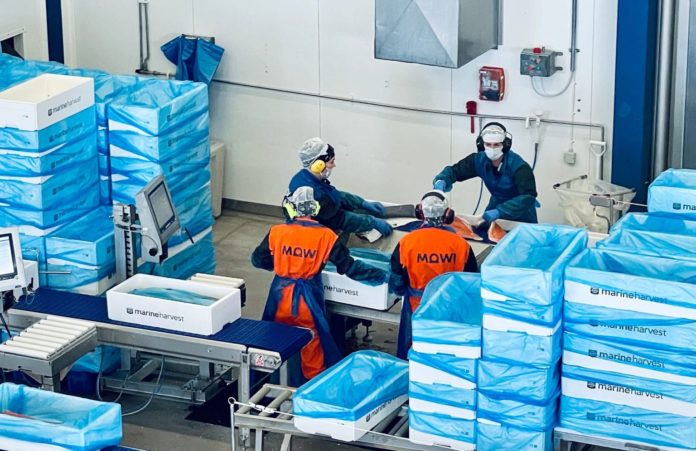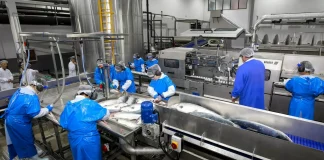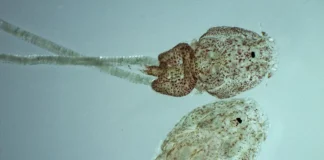With the potential to reshape the landscape of seafood trade across Europe, the looming battle over Norway’s production fish export ban is set to to spark debate across the EU and in the Norwegian parliament itself.
Things are really starting to snowball. Last night, news broke that the Netherlands is throwing its weight behind Denmark’s battle against Norway’s export ban on production fish.
This development comes on the heels of the EU Commission’s trade department official flagging of Norway’s export ban on production fish as a potential trade barrier. Showing solidarity, the Dutch Fishery Association, De Visfederatie, has voiced support for this stance.
Within the EU borders, a staggering 20,000 individuals are engaged in processing Norwegian fish—far surpassing the workforce in Norway itself. Denmark and the Netherlands boast robust processing industries and are expressing frustration with what they perceive as a protectionist regulatory landscape.
Illegal export of production fish distorting EU market says Danish Seafood Association
Correcting Errors
Under Norwegian law, farmed salmon is categorized into “superior”, “ordinary”, and “production” grades. “Production” grade salmon, typically marked by minor defects like wounds or malformations, is prohibited from export until corrected in local Norwegian processing plants. The idea behind this regulation, introduced back in the 1980s, is to correct the damage to fish locally before it’s sent out of the country.
To draw a topical analogy: just as a photographer might clean up a photo before distribution, Norway tidies up its prized export for the international markets.
Seafood companies, which oversee many of Norway’s processing firms, view the export ban as essential to safeguarding the “Norwegian Salmon” brand. They recognize that the nation’s processing industry relies on “prodfisk,” with employment and business models built around discounted raw materials.

In a scenario of free competition with the vast processing facilities on the continent, well-paid Norwegian processing workers would face challenges. Removal of quality regulations could jeopardize many of these jobs.
The export ban on whole production fish is distinctively Norwegian. Scotland, Ireland, and the Faroe Islands lack such regulations. They sell wounded fish directly into the EU market without receiving lower prices than Norway. The brand strength of Scottish or Faroese salmon, when adjusted for volume, is at least on par with the Norwegian brand. Arguments to the contrary are misleading.
Saga
While it’s understood that fish with wounds aren’t sold to end customers, fishmongers, grocery stores, catering, and restaurants prefer the opportunity to trim the fish themselves, particularly within the EU.
For those observing the evolution of Norwegian salmon market access over the past 35 years, it’s notable that familiar players dominate the scene. Those acquainted with this ongoing narrative recognize that the EU holds various cards if its demands aren’t met.
What’s unique this year is an unusually high prevalence of wounded fish in the market. Up to 40 percent of the fish suffer from winter sores and injuries caused by jellyfish or lice attacks. Such volumes strain the country’s processing industry.
Under normal circumstances, Norway exports between 20,000 and 30,000 tons of salmon per week. Considering the limited fillet capacity of the country’s Baader and Marel machines—barely surpassing 5,000 tons—and the current record-high price levels, market watchers hesitate to freeze fish while awaiting periods with fewer wounded specimens.
What exactly are production fish anyway? The controversial world of salmon grading
Smuggling
These are the circumstances that have sets the stage for the smuggling of “prodfisk.”
In several instances, iLaks has exposed processing firms and exporters with inadequate quality control measures. They’re aware that the Norwegian Food Safety Authority and customs lack the resources to inspect every batch of salmon leaving the country, regardless of whether it’s classified as “superior” or “production.”
This illicit trade often occurs in collaboration with foreign processing firms. They receive discounted wounded fish and share profits with Norwegian suppliers. Apart from violating regulations, this practice undermines the efforts of legitimate fish exporters. In recent weeks, the scarcity of “superior” fish in the market has made it challenging for many exporters to procure fish at all.
Adding complexity is the exemption granted by the Norwegian Food Safety Authority to Hav Line, the owner of the processing vessel “Norwegian Gannet,” allowing it to export “prodfisk” for ten years. This further floods the market with discounted wounded fish.
Aslak Berge is the founder and editor of Norwegian salmon farming news site iLaks.









